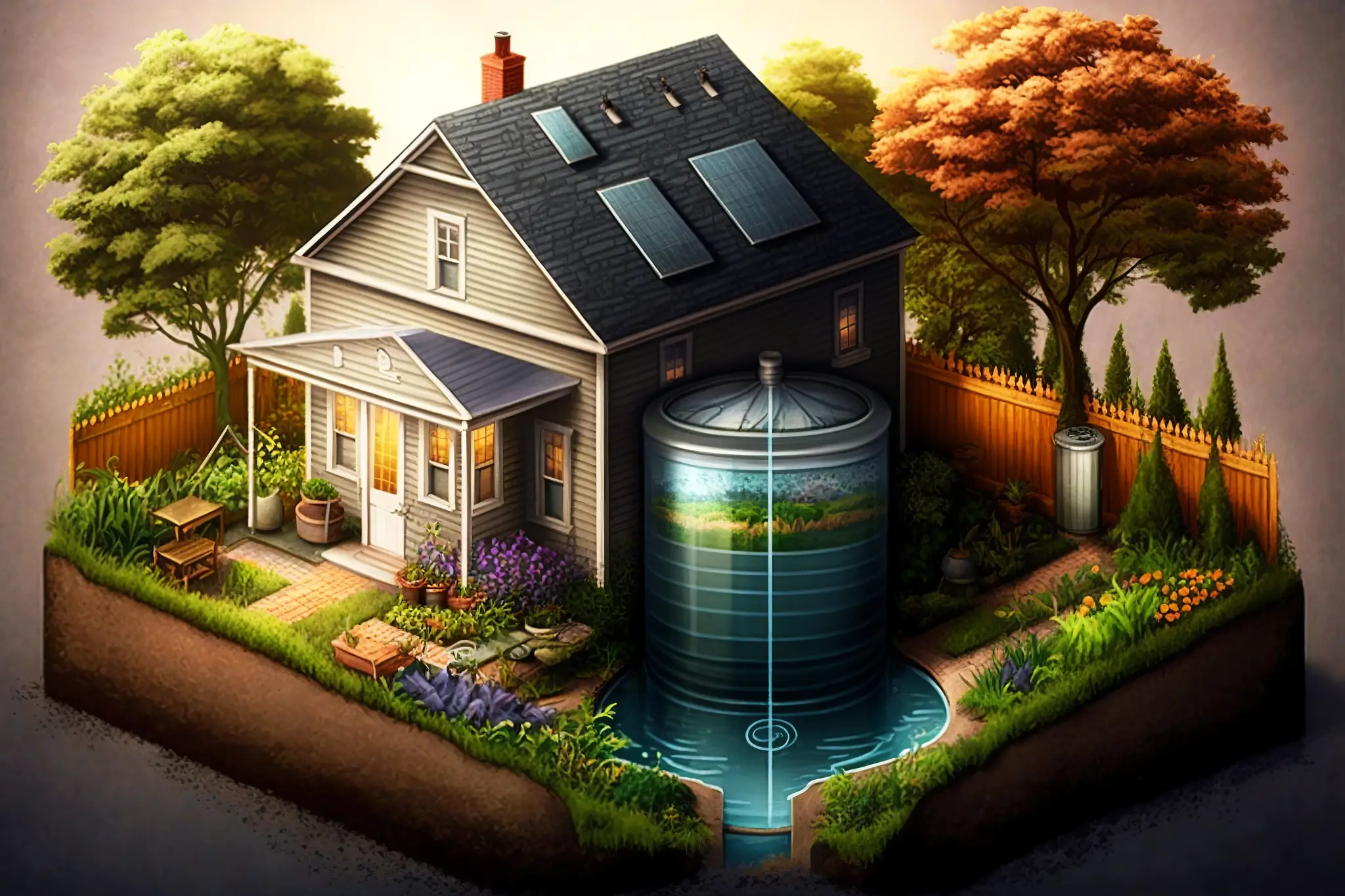TLDR: Stormwater Retention Credits, also called Stormwater Credit Trading Programs, are ways to benefit developers and property owners by buying and selling stormwater best management practices.
What are Stormwater Credit Trading Programs?
Stormwater credit trading programs are a mechanism for buying and selling stormwater retained or treated through green infrastructure (GI), sometimes also called nature-based solutions (NbS). When a business, organization, or other landowner’s stormwater facilities treat beyond what is required of them through their local stormwater ordinances, they may be able to sell credits representing the additional stormwater retained or treated on their property. These credits are a commodity for developers that face constraints in meeting their on-site retention requirements, whether due to space or budget. Developers can purchase credits from aggregators, essentially funding the treatment of stormwater offsite. Purchasing SRCs allows developers to quickly meet their stormwater management requirements while offering numerous benefits, from simplifying permit processes to creating the flexibility to reallocate on-site space to other needs.
Additionally, the trading of credits promotes the implementation of stormwater best management practices, including bioretention, green roofs, and permeable paving, where it is most valuable, targeting flood-prone spaces and areas where runoff has a heightened impact on water sources. As the need for stormwater management facilities grows nationwide, SRC trading is becoming a popular way for cities to increase the efficiency of stormwater programs and expand upon the benefits of green infrastructure for all parties involved.
For example, if a hotel is developing a small land parcel in Washington DC, they are required by permitting and regulation to account for their stormwater runoff. This hypothetical hotel needs more space for stormwater best management practices. To offset their stormwater fees, they can purchase credits from someone offsite filtering stormwater runoff.
Which cities already have Stormwater Credit programs?
Washington, DC, is home to the most advanced stormwater credit trading program. With the implementation of Sustainable DC in 2013, revised stormwater rules required developers to retain stormwater caused by most storms that affect the region. A storm is measured by the amount of rainfall it produces in 24 hours compared to historical data of storms in a given area, and the program requires retention of water for either 80th or 90th-percentile storms, depending on site characteristics and location. However, the SRC Trading Program established a tradeable market for stormwater retention. Developers have the option to meet this standard through on-site management, or they can purchase credits from other developers whose projects exceed the minimum requirements. Credit aggregators, such as Rainplan, provide credits to developers for projects that are protecting DC’s rivers, which in turn, gives developers the ability to focus on parking, amenities, and other additions to their construction, proving to be a cost-effective and efficient means of increasing green infrastructure across the District.
But the market did not take off overnight. Two transactions occurred throughout 2014 and 2015, as participants needed guidance on how to value the credits. DC’s Department of Energy and Environment’s (DOEE) Price Lock Program brought stability and security to the market by instituting a price floor, a fixed price at which SRC aggregators can generate credits and sell them back to the DOEE instead of waiting for other developers. Over the next several years, SRC trading consistently increased, with $954,163.24 in sales across 45 transactions in 2020. Rainplan’s bioretention projects generate 38,000 credits each year, allowing residential developers, housing organizations, and educational institutions across the District to meet regulatory requirements, capturing stormwater that would otherwise enter the Anacostia River. Washington, DC’s success is just the beginning, as other cities also have programs in the works.

Upcoming SRC Programs
Since the inception of DC’s SRC trading program, other stormwater utilities around the country eagerly watched it grow and are beginning to follow suit. Grand Rapids, Michigan, and Cook County, Illinois, are developing markets for stormwater retention in their ways, demonstrating that SRC trading programs can be adapted to different cities’ needs.
In Illinois, The Nature Conservancy has partnered with the Metropolitan Planning Council (MPC) to build StormStore, an SRC market active in two watersheds surrounding Chicago. Stormwater infrastructure across Cook County has not had the opportunity to develop to modern standards, as the MPC notes that stormwater in the most densely populated regions is managed through inefficient “gray” infrastructure, referring to structures such as tunnels and reservoirs. StormStore facilitates the implementation of GI, bringing stormwater management up to speed with modern needs and mitigating the region’s high urban flooding risks.
Credit-generating projects include a detention pond in the Village of Franklin Park, relieving flooding issues in residential development. While residents enjoy the benefits of this GI project, the credits can be sold to developers within the Village, generating revenue for the Village and promoting economic development. StormStore is more than an opportunity for municipalities; offsite stormwater compliance lends flexibility to developers while posing an opportunity for public and private landowners to profit from their voluntary stormwater facility projects, spurring GI where it can have the most significant impact. The credit system also offers the benefit of funding the long-term maintenance of GI. SRCs are an investment in the region’s future, giving developers access to funds to keep GI working for years.
“A lot of those grants, a lot of the funding, a lot of the budgeting doesn’t really cover the [operations and maintenance] in the long term, and so this is a way to kind of help ensure that this infrastructure that we’re investing in now will be maintained and working twenty, thirty years down the line,” said Jennifer Jenkins of The Nature Conservancy’s Illinois Chapter.
Meanwhile, in Grand Rapids, the developing program is led by the city and Stormwater Currency, a collaboration between American Rivers, Corona Environmental Consulting, and the Water Environment Federation. Facing flooding issues surrounding the Grand River, Stormwater Currency’s program addresses these hazards while being conscious of the water quality as it returns to the river. Unlike gray infrastructure, green infrastructure slows the release of stormwater, decreasing the risk of sudden flooding, and it helps to reduce the pollutants washed into bodies of water. The city is divided into three trading areas where the credits, each equivalent to one cubic foot of green stormwater infrastructure retention capacity, can be bought and sold. GI projects across the city can significantly impact the Grand River.
“For everything infiltrated, you’re improving the water quality for so many contaminants that will be filtered out,” said Carrie Rivette, former Grand Rapids Wastewater/Stormwater Maintenance Superintendent. “We care about our neighbors downstream, not to mention that we care about the river.”
The City of Grand Rapids is amid a river revitalization project aiming to improve safety and expand recreational opportunities in the Grand River. By selling SRCs, credit aggregators can contribute to protecting this incredible natural resource and the city’s drinking water source while generating revenue through credit sales.
How to get involved
If you’re interested in installing stormwater BMPs on your properties that could generate credits, head over to Rainplan’s incentive browser to explore resources for your project. If you are a developer in one of the cities above, you can visit the StormStore or Washington, DC credit registries and read more about the City of Grand Rapids’ program to find out how to meet your site’s stormwater needs.



